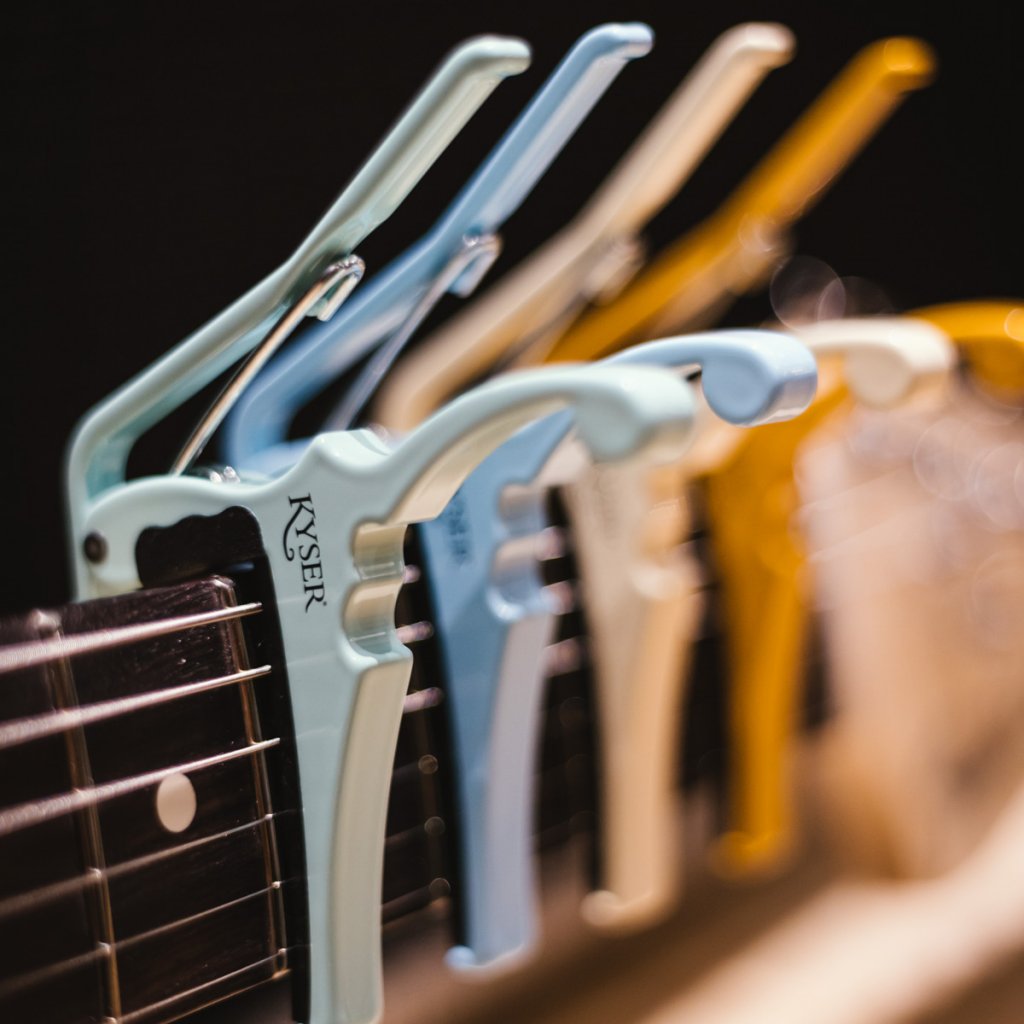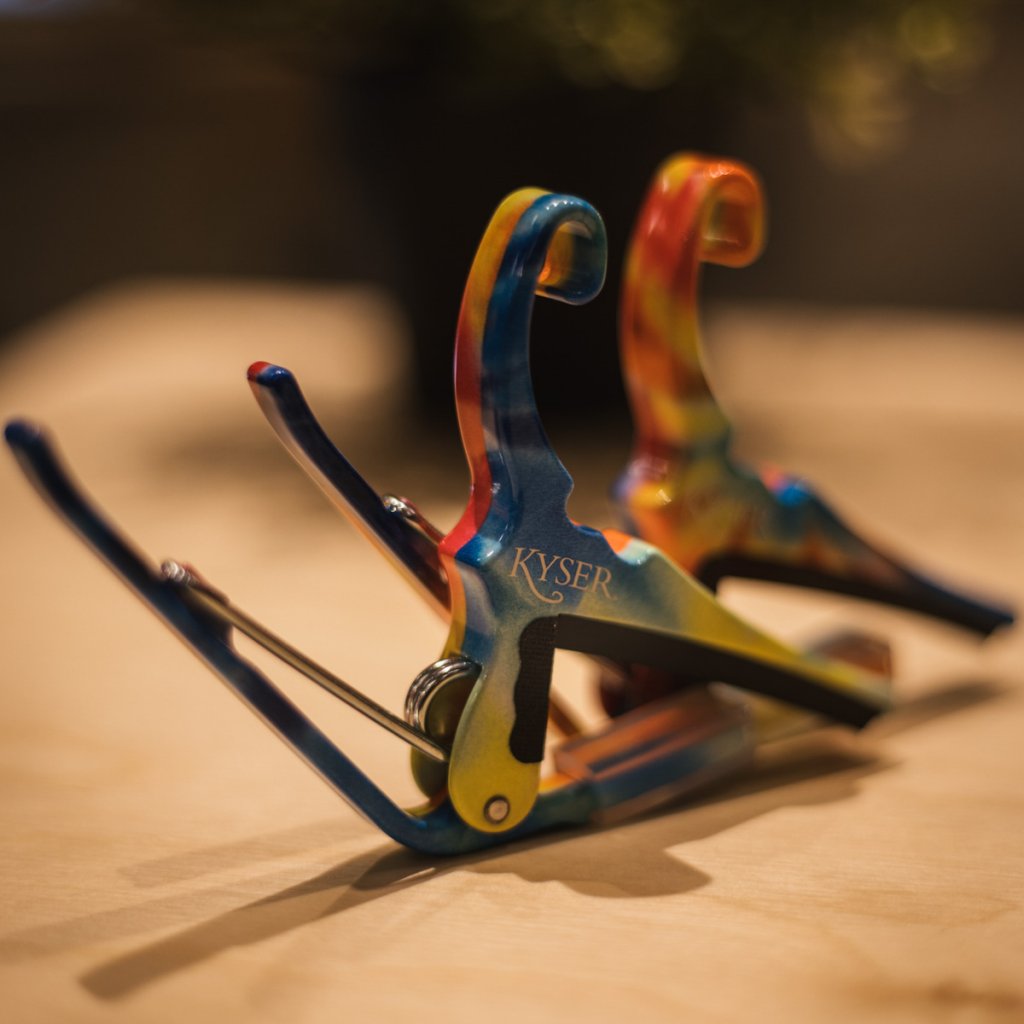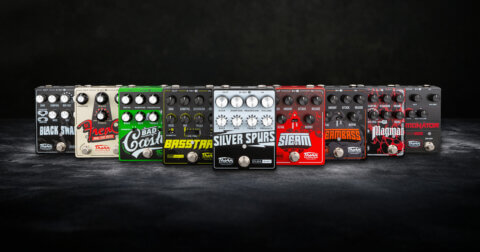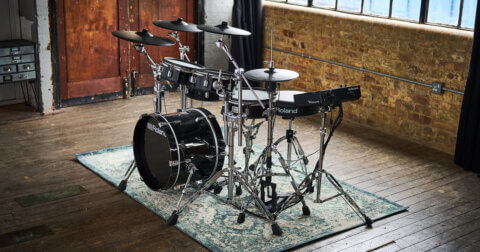Ask any guitar player what is their most indispensable tool and you might hear a few of them mention the capo. Especially those who fancy the acoustic guitar. The capo can sometimes be an unglamorous topic at the gear discussion table. They are inexpensive, not as gadget-ey as some other guitar accessories, but these little contraptions bring a whole new world of sounds to your playing.
What is a guitar capo?
A capo is a tiny but might guitar accessory that when mounted onto the fretboard of a guitar, raises the pitch of the open strings. The device clamps down on your strings at the fret you mount it on and virtually takes your guitar nut and moves it higher up the fretboard. So if you’re in standard tuning and you mount a capo at the fifth fret, your open strings will now be A, D, G, C, E, A.

Do you need a capo?
Sure, you could take a chord sheet and transpose the chords so that you can play the song without a capo. But it just isn’t the same. A G chord with a capo placed on the third fret is going to sound completely different from a B flat chord played without a capo. The way the open strings ring just sound that much better. Try it!
If you want to sound just like your favourite songs, you’ll need a capo for the job, and chances are, it’ll be much easier to play as well. Wonderwall by Oasis? You’re gonna need a capo for that. Here Comes the Sun by the Beatles? You’re gonna need a capo for that.
Choosing the best guitar capo
Capos are usually inexpensive and most guitar players won’t feel the pinch when they need to add one to their toolset. But like all things guitar, there are so many to choose from. So where do you begin? What do you need to consider?
Will it fit?
First, you’ve got to consider the instrument you’re going to use with a capo. Electric guitar? Acoustic guitar? Classical? 12-string? Mandolin? Or even bass?! Most capos will do an okay-ish job on any of these instruments, but different instruments have different radiused fingerboards – the curvature of the fretboard. 12-string guitars can also have a wider neck that some capos simply can’t cover. An acoustic guitar might have a curved fretboard radius while a classical guitar has a flat one. Using the wrong capo might produce buzzing. All you’ve got to do is choose a capo that fits your needs.
Capo tension
A well-designed capo distributes just the right amount of tension on the strings of your guitar. Too much pressure and your intonation will be thrown off. Too little pressure and you’ll experience buzzing on some or all of the strings. Some capos like the G7th Newport allow you to dial in the perfect amount of tension via a thumbscrew.
How will you be using the capo?
Musicians are a creative bunch. Most songs that require a capo will have it on the entire song. But why limit yourself to that? Some guitarist will throw on a capo halfway through a song, or move the capo along the fretboard. If you find yourself needing to move a capo often, you’ll find clamp-type capos like the Kyser Quick-Change Capo a treat.
There are also speciality capos out there. Here’s where things get real creative. There are capos that change the pitch on some strings only. These are partial capos like the Kyser Short-cut that can fret over the A D and G strings to produce a sound similar to the famous DADGAD tuning.
Read more: 7 Must-Have Guitar Accessories
Our best guitar capo picks
Once you’ve figured out what type of capo you need, it’s a lot easier to narrow down your options. But to help you further, we’ll showcase some of our favourite capos we have available at Swee Lee.
G7th Performance 3 Guitar Capo

The G7th Performance 3 is an incredible capo that seemingly ticks all the boxes. Remember we talked about fretboard radius? G7th have designed a capo that actually adapts to the fretboard radius of your guitars. Thanks to years of research and feedback, their patented Adaptive Radius Technology allows the string pad to deliver the precise amount of tension to each string – more tension on the thicker, lower strings, and less on the thinner higher strings.
The G7th Performance 3 allows for one-handed operation too. Designed with an easy squeeze-to-release mechanism, you can move the capo up and down the fretboard with one hand, and attach and remove it without any effort.
Kyser Quick Change Capo

Kyser set the industry standard for dependable and easy-to-use capos. Their lightweight aluminium-made Quick Change Capo allows you to use it with one hand with incredible speed of adjustment. Players love the unique trigger mechanism that holds your strings in tune and buzz-free.
Ernie Ball Axis Dual Radius Capo

As its name suggests, the Ernie Ball Axis Dual Radius Capo allows you to use one capo for two different fretboard radius – one for a flat radius and one for a curved radius. It’s simple yet brilliant design is an elegant one. One side is for flat, the other is for curved – just clamp them the right way around!
Taylor Capo, 12-String/Nylon

The maker of some of the world’s best acoustic guitars will definitely know a thing or two about capos. Taylor have chosen a yoke design for their capos and this 12-string/nylon one is no exception. This seemingly archaic technology might not be the most advanced or intricate, but it has its benefits. The around-the-neck yoke design applies pressure from directly behind the strings instead of the side of the fretboard, allowing even distribution of tension across the strings. The screw also allows you to fine-tune just the right amount of tension for your instrument.
G7th Newport Guitar Capo

Another capo that allows you to fine-tune the amount of tension, the G7th Newport is a lightweight and low-profile capo that is perfect for many situations. Its concealed flip lever design is a quick release that lets you attach and remove the capo easily.

On the subject of capos, we’re delighted to announce that Swee Lee is a Preferred Dealer of Kyser Musical Instruments! We love their time-tested capos and the huge variety of beautiful designs and we’re excited to be able to bring in even more of their amazing products!
Shop Kyser Products
We also stock many more different brands and types of capos for every need. The best way to see what works for you is to head into any of our stores and check them out in person!
Read more: The Best Acoustic Guitars Under $500



